Ecological Limits and Hierarchical Power
✑ BLAIR FIX, SHIMSHON BICHLER, JONATHAN NITZAN` ╱ ± 5 minutes

The root of our ecological problems lies not in the ‘economy’, but in the hierarchical power structure of capitalism.

The proportion of energy devoted to sustaining hierarchy tends to increase over time.
The root of our ecological problems lies not in the ‘economy’, but in the hierarchical power structure of capitalism.
From: The Bichler & Nitzan Archives and The Bichler & Nitzan Archives, April 5 2019. ╱ About the authors
Blair Fix is a political economist interested in energy, inequality, and hierarchy (on twitter: @blair_fix). Shimshon Bichler teaches political economy at colleges and universities in Israel. Jonathan Nitzan teaches political economy at York University in Canada. All of Bichler & Nitzan's publications, lectures, reviews, interviews and courses are available for free from The Bichler & Nitzan Archives (on twitter: @BichlerNitzan).
Nowadays, it is commonplace to claim that the economy overuses our limited material and energy resources (Figure 1) and that this overuse threatens both human society and the biosphere. Other than anti-science cranks, the only ones who seem to deny this claim are mainstream economists (Fullbrook 2019).

In our view, though, this conventional condemnation of the economy is somewhat misleading. As we see it, the root of our ecological problems lies not in the ‘economy’, but in the hierarchical power structure of capitalism.
1. Hierarchy as a Means
In his PLOS ONE article, ‘Energy and Institution Size’ (2017), Blair Fix shows that per capita energy capture (or energy use) is positively and often tightly correlated with organization size, both corporate and governmental: the larger and more hierarchical the organizations in a society, the greater that society’s capture of energy per person.
This positive correlation is evident in the U.S., where time-series data go back to the late nineteenth century (Figure 2).

And the same positive correlations – using time-series/cross-section data – are also evident internationally (Figure 3)

Fix’s explanation for this positive correlation emphasizes ‘economies of scale’ (Figure 4). Higher energy capture, he argues, demands increasingly complex coordination. Human beings, though, are limited in their natural ability to organize in larger groups. According to Robin Dunbar (1992), the size of the human neocortex makes it impossible to maintain stable personal connections with more than 150 people, give or take (Dunbar’s Number).

The historical solution to this coordination problem is hierarchy (Turchin and Gavrilets 2009). In a hierarchy, each person has a limited number of personal connections – one superior above and a few subordinates below. The modular nature of these connections makes it possible to combine them into huge vertical organizations of almost any size (think of a country like China).
From this viewpoint, hierarchical power is a means of harnessing more energy. Societies that wish to increase their standard of living can do so only by accepting more hierarchical power structures. Without such vertical structures, they would be unable to coordinate on a scale large enough to harness the energy they need.
2. Hierarchy as a Goal
But there is a flip side to this argument. In their paper, ‘Growing through Sabotage: Energizing Hierarchical Power’ (2017), Shimshon Bichler and Jonathan Nitzan argue that much of the energy harnessed by hierarchical societies does not go to wellbeing at all, but rather to building, fortifying and sustaining power hierarchies as such (Figure 5).

The starting point of this argument is that capitalism is best understood not as a mode of production and consumption, but as a mode of power (Nitzan and Bichler 2009). According to this view, the power of a capitalist or a group of capitalists is quantified by differential capitalization – namely, by the size of a group’s capitalization relative to the capitalization of other groups or entities (for example, the ratio of Amazon’s capitalization to Google’s; FAANG’s to the S&P 500’s; the top ten global integrated oil companies’ to Datastream’s world aggregate of all firms; the S&P 500’s to the U.S. population’s average, etc.).
From this perspective, capitalists are driven to augment their power for the sake of power – a quest that leads to a never-ending differential race to erect larger and larger hierarchical organizations, regardless of whether these organizations are more ‘effective’ capturers of energy.
Moreover, the build-up of hierarchical power elicits resistance from those who are subjected to this power, which in turn drives capitalists to build even more hierarchies in order to limit and contain that resistance.
For our purpose here, the key points of this flip argument are that (1) building and sustaining hierarchies requires plenty of energy; (2) the proportion of energy devoted to sustaining hierarchy tends to increase over time; and (3) a large and growing share of our energy use as a society has little or nothing to do with the wellbeing of the population. [1]
It’s Not the Economy, It’s the Hierarchy
This thinking raises an interesting possibility. What if the recent exponential growth of energy capture (Figure 1) is caused not by ‘economic growth’, but by the growth of hierarchical structures? In this case, achieving sustainability would require dismantling the capitalist hierarchies that dominate us. [2]
Whether these hierarchies can be undone – and before it is too late – is of course a different question altogether.
Endnotes
[1] These claims should not be confused with David Graeber’s notion of ‘bullshit jobs’ (Graeber 2018). Whereas Graeber identifies the rise of meaninglessness and waste, Bichler and Nitzan emphasize the fortification and extension of differential power. On the difference between wasteful spending and investment in differential power, see Bichler and Nitzan (2017, Section 12.3)
[2] We are speculating here that the expansion of hierarchical power drives the growth of energy. Even if the causal direction is reversed (the need for more energy requires more hierarchy) or is circular (energy and hierarchy drive each other), the need to dismantle hierarchy still seems plausible. If the energy-hierarchy correlation remains positive, a world that uses less energy is likely to be less hierarchical.
References
Bichler, Shimshon, and Jonathan Nitzan. 2017. Growing through Sabotage: Energizing Hierarchical Power . Working Papers on Capital as Power (2017/02, July): 1-59.
Dunbar, R. I. M. 1992. Neocortext Size as a Constraint on Group Size in Primates . Journal of Human Evolution 22 (6, June): 469-493.
Fullbrook, Edward. 2019. Economics 101: Dog Barking, Overgrazing and Ecological Collapse . Real-World Economic Review (87, March): 33-35.
Graeber, David. 2018. Bullshit Jobs. First Simon & Schuster hardcover ed. New York: Simon & Schuster.
Nitzan, Jonathan, and Shimshon Bichler. 2009. Capital as Power. A Study of Order and Creorder . RIPE Series in Global Political Economy. New York and London: Routledge.
Turchin, Peter, and Sergey Gavrilets. 2009. Evolution of Complex Hierarchical Societies . Social Evolution & History 8 (2): 167-198.

In our view, though, this conventional condemnation of the economy is somewhat misleading. As we see it, the root of our ecological problems lies not in the ‘economy’, but in the hierarchical power structure of capitalism.
1. Hierarchy as a Means
In his PLOS ONE article, ‘Energy and Institution Size’ (2017), Blair Fix shows that per capita energy capture (or energy use) is positively and often tightly correlated with organization size, both corporate and governmental: the larger and more hierarchical the organizations in a society, the greater that society’s capture of energy per person.
This positive correlation is evident in the U.S., where time-series data go back to the late nineteenth century (Figure 2).

And the same positive correlations – using time-series/cross-section data – are also evident internationally (Figure 3)

Fix’s explanation for this positive correlation emphasizes ‘economies of scale’ (Figure 4). Higher energy capture, he argues, demands increasingly complex coordination. Human beings, though, are limited in their natural ability to organize in larger groups. According to Robin Dunbar (1992), the size of the human neocortex makes it impossible to maintain stable personal connections with more than 150 people, give or take (Dunbar’s Number).

The historical solution to this coordination problem is hierarchy (Turchin and Gavrilets 2009). In a hierarchy, each person has a limited number of personal connections – one superior above and a few subordinates below. The modular nature of these connections makes it possible to combine them into huge vertical organizations of almost any size (think of a country like China).
From this viewpoint, hierarchical power is a means of harnessing more energy. Societies that wish to increase their standard of living can do so only by accepting more hierarchical power structures. Without such vertical structures, they would be unable to coordinate on a scale large enough to harness the energy they need.
2. Hierarchy as a Goal
But there is a flip side to this argument. In their paper, ‘Growing through Sabotage: Energizing Hierarchical Power’ (2017), Shimshon Bichler and Jonathan Nitzan argue that much of the energy harnessed by hierarchical societies does not go to wellbeing at all, but rather to building, fortifying and sustaining power hierarchies as such (Figure 5).
Much of the energy harnessed by hierarchical societies does not go to wellbeing at all, but rather to building, fortifying and sustaining power hierarchies as such.

The starting point of this argument is that capitalism is best understood not as a mode of production and consumption, but as a mode of power (Nitzan and Bichler 2009). According to this view, the power of a capitalist or a group of capitalists is quantified by differential capitalization – namely, by the size of a group’s capitalization relative to the capitalization of other groups or entities (for example, the ratio of Amazon’s capitalization to Google’s; FAANG’s to the S&P 500’s; the top ten global integrated oil companies’ to Datastream’s world aggregate of all firms; the S&P 500’s to the U.S. population’s average, etc.).
From this perspective, capitalists are driven to augment their power for the sake of power – a quest that leads to a never-ending differential race to erect larger and larger hierarchical organizations, regardless of whether these organizations are more ‘effective’ capturers of energy.
Moreover, the build-up of hierarchical power elicits resistance from those who are subjected to this power, which in turn drives capitalists to build even more hierarchies in order to limit and contain that resistance.
For our purpose here, the key points of this flip argument are that (1) building and sustaining hierarchies requires plenty of energy; (2) the proportion of energy devoted to sustaining hierarchy tends to increase over time; and (3) a large and growing share of our energy use as a society has little or nothing to do with the wellbeing of the population. [1]
It’s Not the Economy, It’s the Hierarchy
This thinking raises an interesting possibility. What if the recent exponential growth of energy capture (Figure 1) is caused not by ‘economic growth’, but by the growth of hierarchical structures? In this case, achieving sustainability would require dismantling the capitalist hierarchies that dominate us. [2]
Whether these hierarchies can be undone – and before it is too late – is of course a different question altogether.
Endnotes
[1] These claims should not be confused with David Graeber’s notion of ‘bullshit jobs’ (Graeber 2018). Whereas Graeber identifies the rise of meaninglessness and waste, Bichler and Nitzan emphasize the fortification and extension of differential power. On the difference between wasteful spending and investment in differential power, see Bichler and Nitzan (2017, Section 12.3)
[2] We are speculating here that the expansion of hierarchical power drives the growth of energy. Even if the causal direction is reversed (the need for more energy requires more hierarchy) or is circular (energy and hierarchy drive each other), the need to dismantle hierarchy still seems plausible. If the energy-hierarchy correlation remains positive, a world that uses less energy is likely to be less hierarchical.
References
Bichler, Shimshon, and Jonathan Nitzan. 2017. Growing through Sabotage: Energizing Hierarchical Power . Working Papers on Capital as Power (2017/02, July): 1-59.
Dunbar, R. I. M. 1992. Neocortext Size as a Constraint on Group Size in Primates . Journal of Human Evolution 22 (6, June): 469-493.
Fullbrook, Edward. 2019. Economics 101: Dog Barking, Overgrazing and Ecological Collapse . Real-World Economic Review (87, March): 33-35.
Graeber, David. 2018. Bullshit Jobs. First Simon & Schuster hardcover ed. New York: Simon & Schuster.
Nitzan, Jonathan, and Shimshon Bichler. 2009. Capital as Power. A Study of Order and Creorder . RIPE Series in Global Political Economy. New York and London: Routledge.
Turchin, Peter, and Sergey Gavrilets. 2009. Evolution of Complex Hierarchical Societies . Social Evolution & History 8 (2): 167-198.

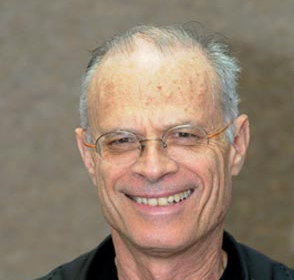
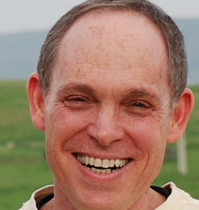


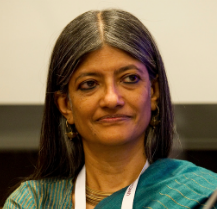



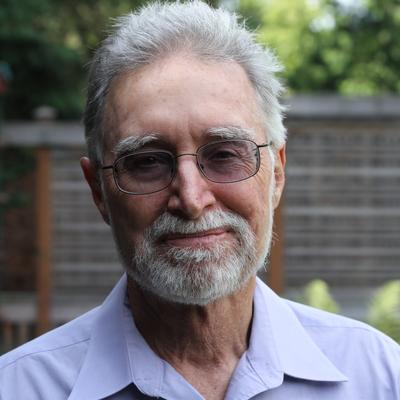





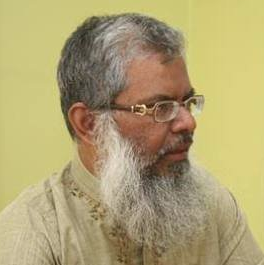










Comments
Post a Comment
Your thoughts...